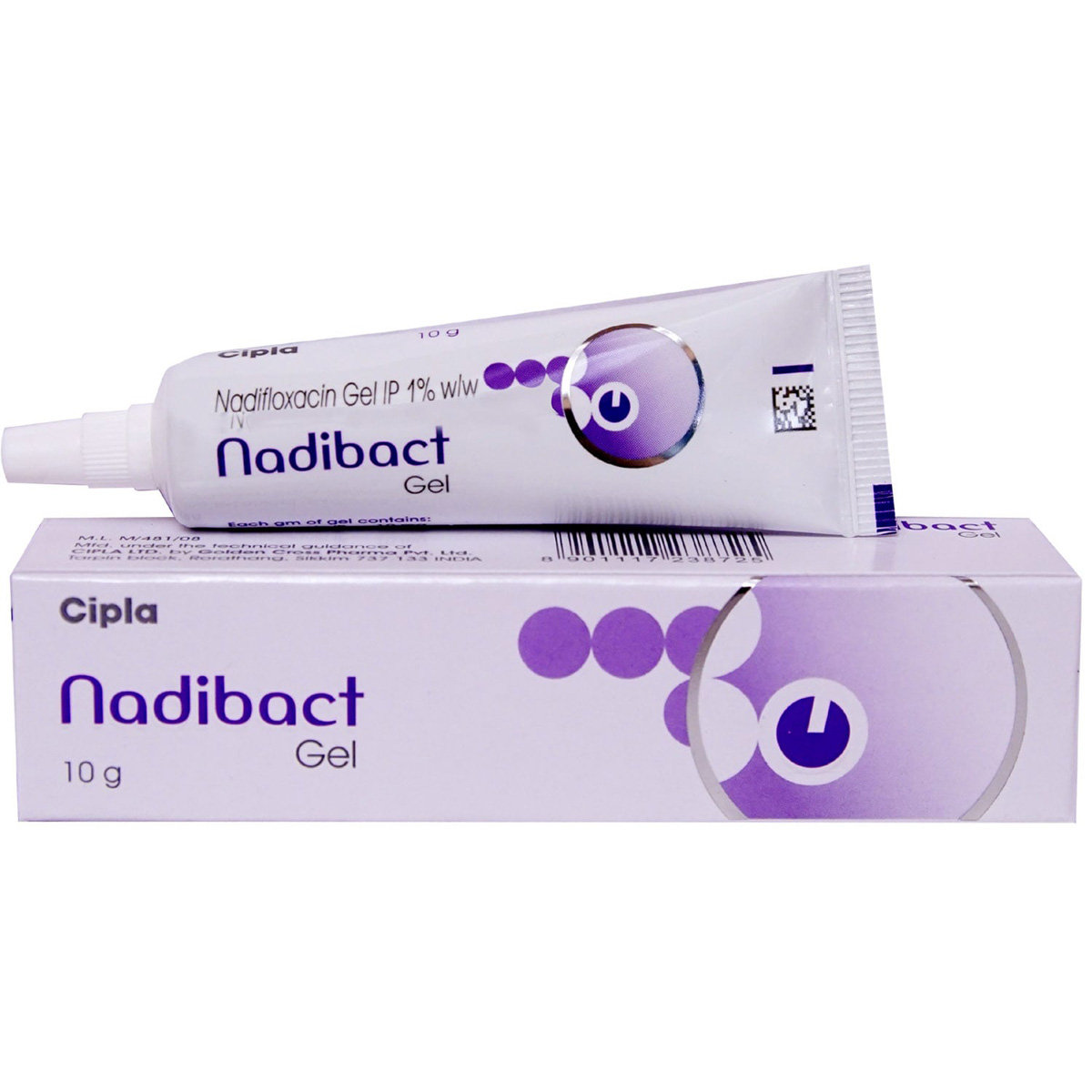Nadifloxacin
About Nadifloxacin
Nadifloxacin contains a class of antibiotics known as fluoroquinolones, primarily used to treat topical infections caused by the bacteria, including skin infections and acne vulgaris. A bacterial infection is a condition in which bacteria grows in the body and cause infection. It can target any body part and multiple very quickly.
Nadifloxacin contains topical antibacterial Nadifloxacin, which helps treat and prevent a wide range of skin bacterial infections. It is bactericidal and works by killing bacteria that cause infections. It inhibits the repairing of bacterial cells and kills the bacteria, thereby preventing the infection's further spread. Nadifloxacin is a broad-spectrum antibiotic against most Gram-negative bacteria, many Gram-positive bacteria, and some anaerobes bacteria (that lives without oxygen).
Nadifloxacin should be applied in the dose and duration as advised by your doctor. You may experience application site reactions like a burning sensation, itching, and rashes in some cases. Most of these side effects of Nadifloxacin do not require medical attention and gradually resolve over time. However, if the side effects are persistent, reach out to your doctor.
Inform your doctor if you are allergic to nadifloxacin or any of the ingredients of Nadifloxacin. Don't apply Nadifloxacin on broken skin and avoid getting it in your eyes, nose, or mouth. The infected area should not be covered with airtight dressings such as bandages unless directed by a doctor, which may increase the risk of side effects. If you are breastfeeding, wash the area properly before breastfeeding as Nadifloxacin can be harmful if taken by the baby with milk.
Uses of Nadifloxacin
Medicinal Benefits
Nadifloxacin contains antibiotic Nadifloxacin, which helps treat and prevent a wide range of bacterial skin infections caused by most Gram-negative bacteria, many Gram-positive bacteria, and some anaerobes bacteria (that lives without oxygen) including Cutibacterium acnes and Staphylococcus epidermidis. It is bactericidal in nature and works by killing bacteria that cause infections by prevents the formation of their cell wall required for living. It also inhibits the repairing of bacterial cells. Altogether it kills the bacteria. Nadifloxacin has the advantage of good penetration in most deep tissues. Hence, it is used for bacterial skin infections.
Directions for Use
Storage
Side Effects of Nadifloxacin
- Burning sensation
- Irritation
- Itching
- Redness
Drug Warnings
Do not apply Nadifloxacin if you are allergic or have had a severe reaction to nadifloxacin or any other quinolone or fluoroquinolone antibiotics such as delafloxacin, levofloxacin, moxifloxacin, and ciprofloxacin. And also, exposure to sunlight should be avoided while taking Nadifloxacin as it may cause increased phototoxicity or photosensitivity. Don't apply Nadifloxacin on broken skin; avoid getting it in your eyes, nose, or mouth. The infected area should not be covered with airtight dressings such as bandages unless directed by a doctor, as this may increase the risk of side effects.
Drug Interactions
Drug-Drug interactions: No interactions found.
Drug-Food Interactions: No interactions found.
Drug-Disease Interactions: No interactions found.
Drug-Drug Interactions Checker List:
Safety Advice

Alcohol
safe if prescribedNo interaction is found. In case of any discomfort, please consult a doctor.

Pregnancy
safe if prescribedNo interaction is found. In case of any discomfort, please consult a doctor.

Breast Feeding
cautionWhile breastfeeding, be cautious that Nadifloxacin is not applied or if applied priorly. The nipple area and breast part should be thoroughly washed before feeding your baby as it can be harmful to be baby if intaken along with milk.

Driving
safe if prescribedNo interaction is found. In case of any discomfort, please consult a doctor.

Liver
safe if prescribedNo interaction is found. In case of any discomfort, please consult a doctor.

Kidney
safe if prescribedNo interaction is found. In case of any discomfort, please consult a doctor.

Children
safe if prescribedNadifloxacin can be given to children but under child specialist medical supervision. Nadifloxacin is prescribed to the children to treat complicated skin infections.
Habit Forming
Diet & Lifestyle Advise
- Exfoliate your skin gently. This helps to cleanse the skin by washing away dry and dead skin cells.
- Regular exercise helps clear out clogged pores.
- Drinking enough water can also greatly improve the general condition of your skin by keeping it hydrated.
- Always remove your makeup before going to bed. Never wear makeup to bed.
- Spend some time on a good skin-care routine.
- Do not use harsh soaps, skin cleansers, or skin products with astringents, lime, or alcohol.
- Maintain proper hygiene and keep the affected area clean.
Patients Concern
Disease/Condition Glossary
Bacterial infection: A bacterial infection is a condition in which harmful bacteria enter, multiply, and infect our bodies. It can target any body part and multiple very quickly. When you get infected with bacteria, you can experience generalized symptoms, like fevers, chills, and fatigue. Bacteria are of various forms comprising commonly of spherical, rod, and spiral-shaped. Bacterial infections vary from minor illnesses like sore throat and ear infections to severe brain infections like meningitis and encephalitis. Few harmful bacteria that cause infections include Streptococcus, Staphylococcus, and E. coli. Anyone can become infected with a bacterial infection. People with weak immune systems or taking immunosuppressive medicine can make them more prone to bacterial infection.
FAQs
Nadifloxacin contains topical antibacterial Nadifloxacin. It is bactericidal and works by killing bacteria that cause infections. It inhibits the repairing of bacterial cells and kills the bacteria, thereby preventing the infection's further spread.
No, Nadifloxacin should be taken in the dose and duration as advised by the doctor. If you apply more than the recommended dose, it might cause unpleasant side effects. If you think your symptoms are not improving, please consult your doctor.
No, Nadifloxacin should not be stopped even if your bacterial infection is fine to avoid coming back of infection. It should be applied for at least 2 days, even if it feels better.
Nadifloxacin can be used in the skin conditions like impetigo (red sores on face), secondarily infected wounds, folliculitis (swollen hair follicles), sycosis vulgaris (infection of the chin or bearded region), and impetiginized dermatitis (skin inflammation).
Nadifloxacin makes your skin sensitive to sunlight, known as photosensitivity. So, prolonged exposure to sunlight or ultraviolet light should be avoided. In case of emergency, you should always wear sunscreen before going out.








